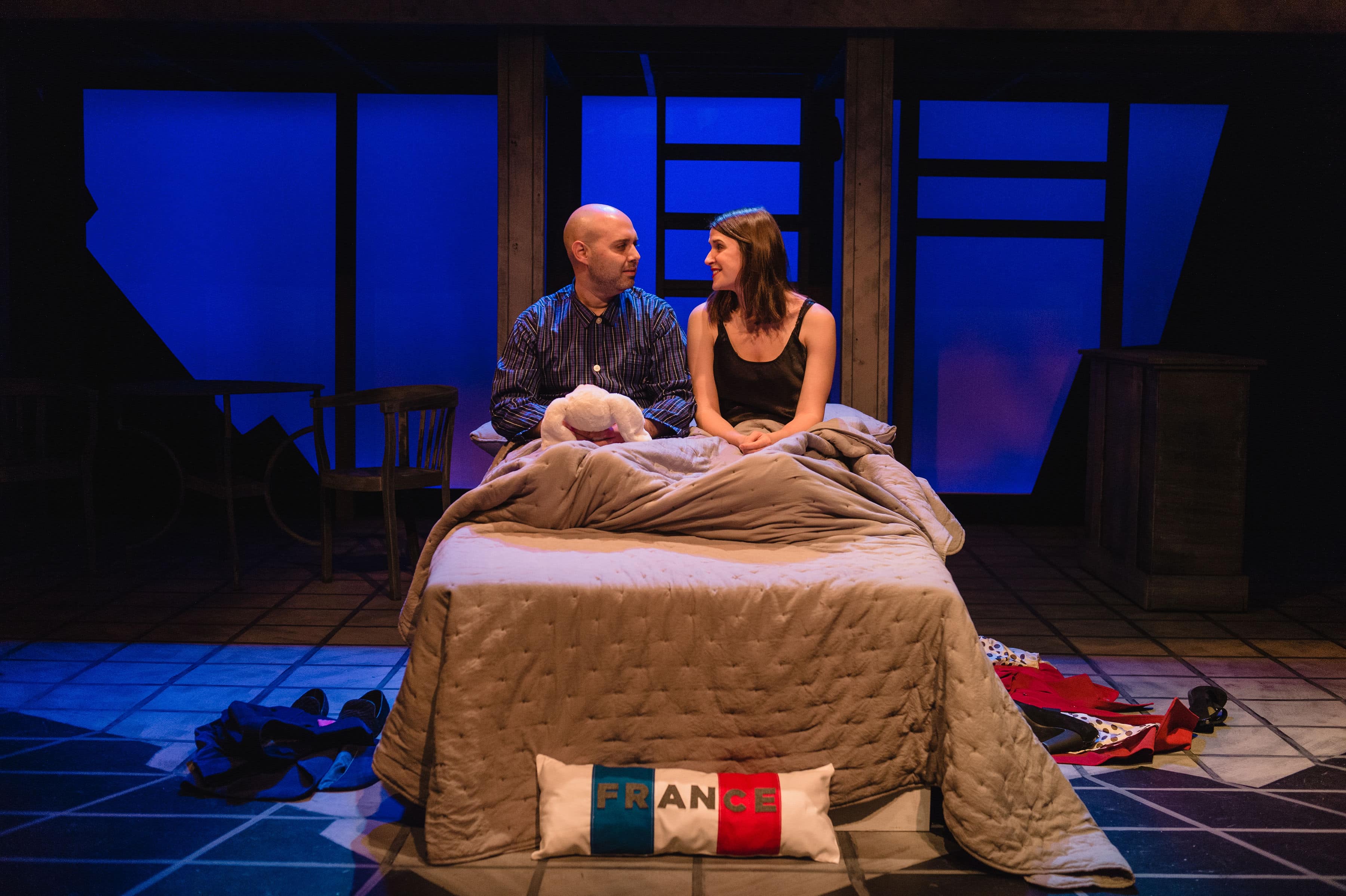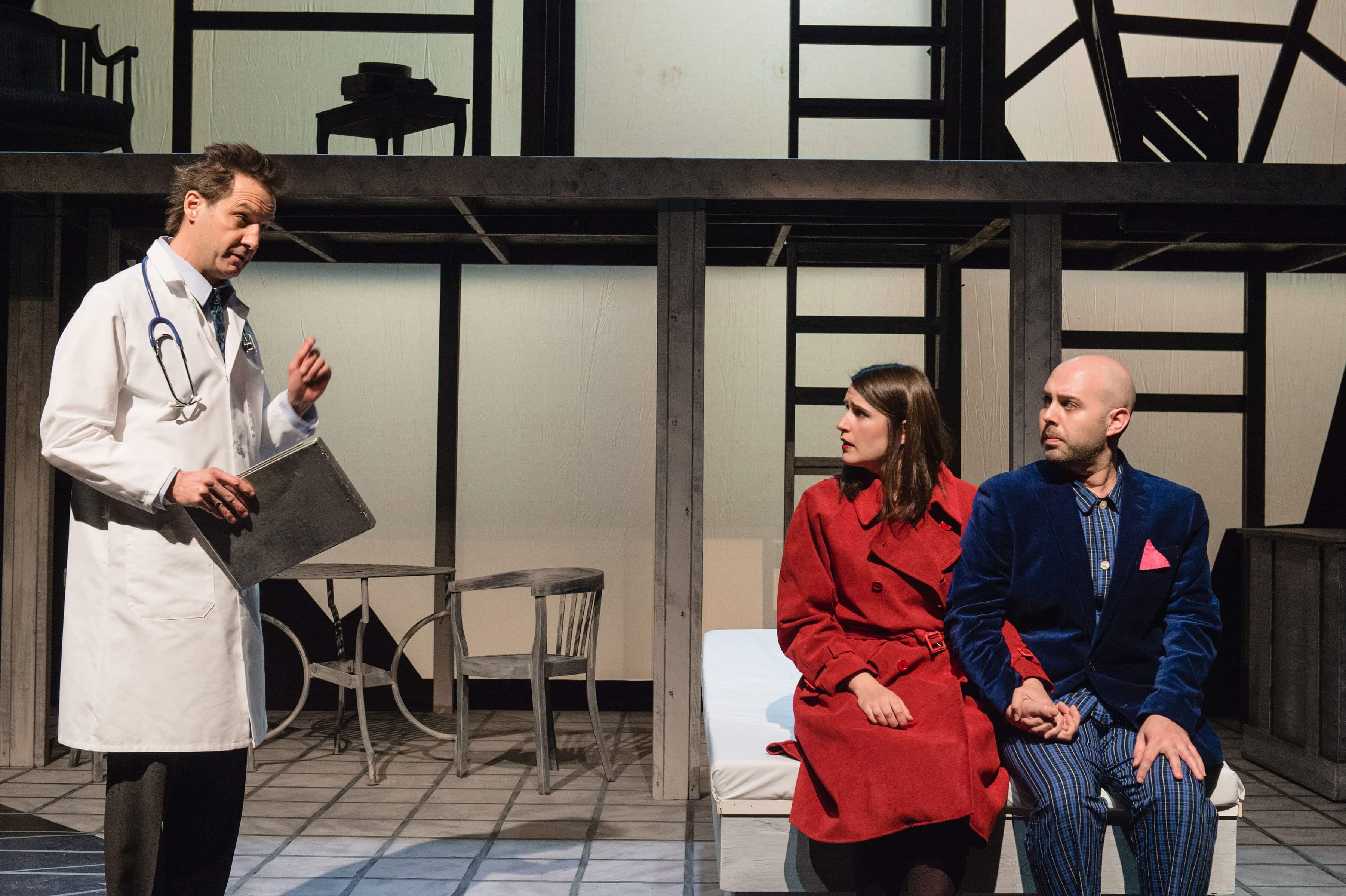Anna always wanted to go to Europe. See the City of Lights. Drink a pint of authentic German beer. Have a rendezvous (or two, or five) with strange men who whisper unintelligible sweet nothings into her ear. When diagnosed with the rare and fatal “Acquired Toilet Disease,” or ATD, Anna – who is terrified of foreign, medical, and all types of “difficult” languages – turns to her polyglot brother, Carl, to take her on an adventure through Europe. It’s at their final stop in Vienna where they hope to meet a mysterious “urologist.” He might have the cure to Anna’s seemingly hopeless disease.

If The Baltimore Waltz, an early work by Paula Vogel, sounds playful and a bit off the rails – well, it often is. Vogel suffuses this work with comic banter, funny episodes, and a whole lot of sex. It’s sure to charm even the steeliest of audience members, but that’s only one side of the coin. The Baltimore Waltz is also part eulogy and personal reckoning. It’s a tear-stained love letter to Vogel’s brother, one of the countless victims of the AIDS epidemic. First staged in 1992, Vogel’s work remains a scathing indictment of the government’s indifference toward AIDS and the accompanying stigmatization caused by lack of research and public knowledge.
The play has a running noir conceit that hearkens to the iconic Carrol Reed film, The Third Man, starring Orson Welles. If the direct name drop of Welles’ man of mystery character, Harry Lyme, doesn’t strike your memory – Vogel practically adapts the film’s famous ferris wheel scene and zither score in one pivotal confrontation between Carl (Michael Innocenti) and Vogel’s chameleon-like version of the “third man” played by Ray Ficca. Trench coats, strange men following at a distance, and a mysterious stuffed rabbit (used as a code word or a source of exchange) assume the stylized dimensions of the classic noir. But they are repurposed here to suggest Carl’s repressed sexuality.

Meanwhile, Anna (Brianna Letourneau) and her sexual exploits are on full display, as she beds bellboys and waiters as a means of thwarting death. The Baltimore Waltz requires precision in comic timing because it so often jumps back and forth between contrasting scenarios to create meaning. A raucous romp with a Parisian, for instance, is intercut with French grammar lessons from Carl. Matthew Keenan’s spacious two-tiered set design and heavy involvement from G. Ryan Smith’s Expressionism-inspired lighting design allow this narrative construct to take effect. The slapstick mostly works. However, when Carl and Anna find themselves at a disconnect, the comic overtones rest awkwardly alongside moments of despair, bearing the seams where the laugh track belongs.
Letourneau has bouts of unexpected brilliance as Anna: the schoolteacher sexually liberated by impending death. Her best scenes are her intimate monologues, which reveal the character’s childlike nature away from the defense mechanisms and gendered expectations of her imaginary European tour. The scene when she enlists the help of “Mr. Left and Mr. Right,” two hand puppets that she uses as to distract her and pass time, stands out. Otherwise, hers and Ficca’s performances feel somewhat vaudevillian. With Ficca’s “third man” transformations, however, this seems to be the point, and part of what makes his Jim Carrey-esque comic turns so memorable.
The Baltimore Waltz is an ambitious piece of theater, fusing melodrama with farce and wish fulfillment with stark reality, in an impressively short length (the play runs 90 minutes). With work so dense and conceptually challenging, and with a payoff after the final twist that will melt your heart, it’s hard not to appreciate any staging effort. Director Susan Maria Rhea’s production is certainly attuned to what makes Vogel’s play standout from other politically-minded postmodern works of the era. Yet, there’s something slightly off-key in the comic execution that doesn’t precisely attain the ideal offered by the play’s blueprint. Nevertheless, Keegan’s production is a pleasure to watch and recommended to anyone who takes delight in the peculiar world of Paula Vogel.
Running Time: 1 hour and thirty minutes, with no intermission.
The Baltimore Waltz plays through February 9, 2019, at Keegan Theater – 1742 Church Street NW, Washington, DC. For tickets, visit the box office or purchase them online.
Lighting Design by G. Ryan Smith; Set Design by Matthew J. Keenan; Costume Design by Alison Samantha Johnson; Properties and Set Dressing Design by Cindy Landrum Jacobs; Sound Design by Niusha Nawab.




